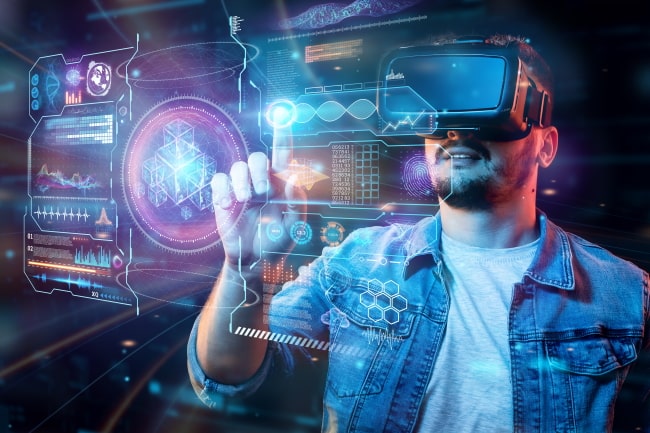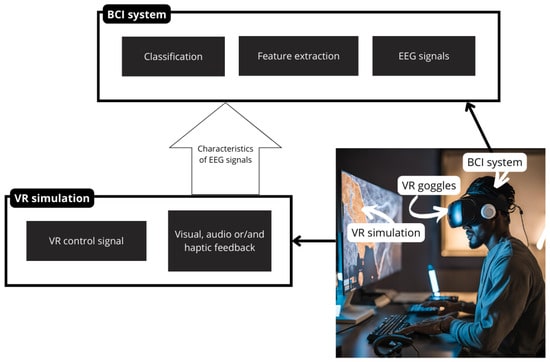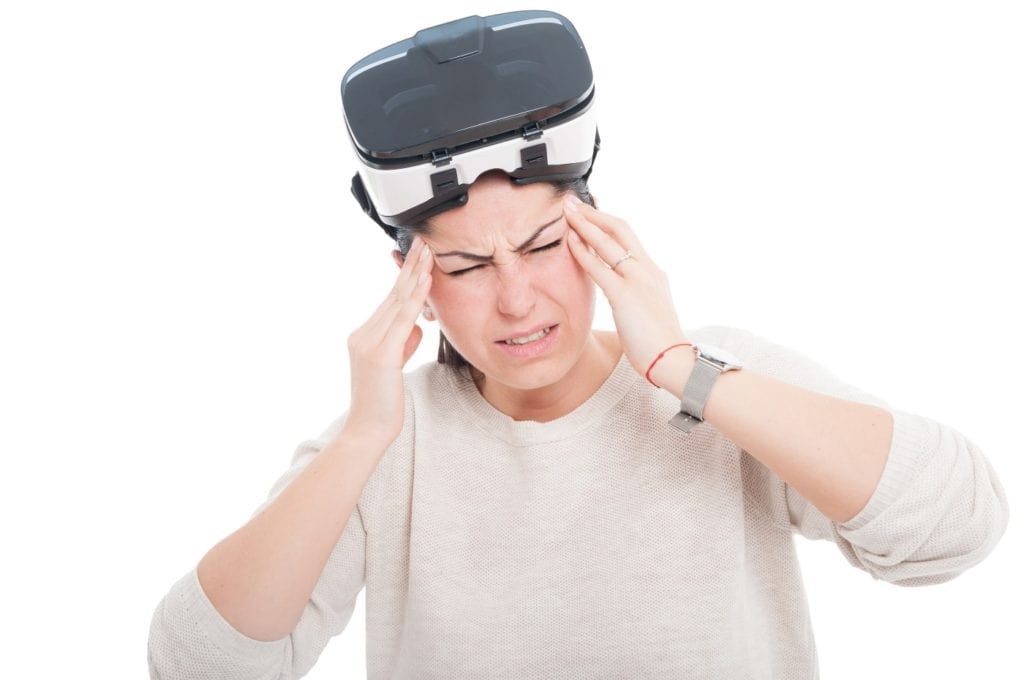Table of Contents
ToggleEscaping Reality: How Virtual Worlds Can Damage Your Mental Health
Beginning: A New World, A New Problem
Virtual Reality (VR) is a groundbreaking technology that is changing how we play, learn, interact with others, and even heal. It gives you experiences that are so real that they make the line between the real world and the digital world less clear. But as it becomes more popular, people are worried about its long-term effects, especially on our mental health. VR can be a fun way to get away from reality, but if you don’t use it carefully, that escape can cause problems in your emotional, mental, and social life.
“Virtual reality isn’t a replacement for life; it’s a way for us to see how we deal with life.”
This in-depth blog talks about the bad side of virtual reality and how using it too much or in an unbalanced way can cause mental health problems like anxiety, depression, addiction, dissociation, social isolation, and a skewed sense of reality. We will also look at who is most at risk, what signs to look for, what experts think, and how to use VR safely.
What does "escapism" mean in virtual reality?
Escapism is the tendency to look for ways to get away from bad situations by getting lost in other experiences. Escapism becomes very real in VR. These experiences, whether you’re fighting mythical creatures, hanging out in virtual lounges, or going to concerts in a metaverse, often feel better and less stressful than real life, especially for people who are going through trauma, anxiety, or social isolation.
The peril resides in conflating these experiences with healing when they may, in fact, obscure more profound psychological traumas

The Psychological Dangers of Virtual Reality
1. VR Addiction and Dependence
People who are addicted to VR feel a strong need to be in virtual worlds all the time. Some important signs are
- Wanting to try VR
- When you stop using VR, you might feel anxious or sad.
- Neglecting hygiene, work, school,
It affects the brain’s dopamine systems in the same way that gaming or social media addiction does, making people want rewards.
2. Derealization and depersonalization
Using VR too much can lead to serious dissociative symptoms.
- Derealization: The world around you starts to feel like a dream or fake.
- Depersonalization: You feel like you’re not in your body or mind.
These signs can make you feel emotionally numb, confused, or anxious about your existence.
3. Being alone and socially isolated
VR, which was meant to be a social space, can ironically make people feel alone.
Relationships with avatars may take the place of real-life interactions, which could lead to
- Loss of real friends
- Depression due to absence of physical presence and intimacy
- Less empathy because of impersonal communication
Case Study:
A teenager who spent 14 to 16 hours a day in a VR community stopped socializing with people in the real world, which made them depressed and fail in school.
4. Trouble with emotions
Virtual experiences are often quick and full of emotions. Long-term exposure may lead to:
- More easily irritated
- Lowered ability to handle frustration
Overreacting to little things that stress you out in real life
5. Problems with sleep and
Too much blue light and VR can mess up your circadian rhythms and lower your melatonin levels.
Consequences are:
- Having trouble falling asleep
- Bad sleep quality
- Feeling and cranky during the day
VR Makes Mental Health Problems Worse
1. Disorders of Anxiety
Using VR to avoid real-life interactions strengthens avoidance behavior, which is a key part of anxiety disorders. Social skills may continue to deteriorate over time.
2. Being sad
Even though VR can make you happy for a short time, the difference between that and a less satisfying reality can make depression worse. For example:
- Despair
- Hating oneself
- A feeling of being empty
3. ADHD and PTSD
For people with PTSD or ADHD, VR’s quick changes and too much
stimulation can:
- Make flashbacks or intrusive thoughts (in PTSD) worse.
- Raise impulsivity and lack of focus (in ADHD).
- and Cognitive Consequences of VR
The Brain on VR: A Neuroscientific Snapshot
1. Changed Brain Function
The brain adapts to repetitive experiences. Long-term use of VR may change the way certain areas work.
- Memory of space
- How emotions work
- Testing reality
2. Cognitive Distortions
Users may start to think of their VR character, accomplishments, or failures as a reflection of who they really are, which can change how they feel about themselves and their self-esteem.

Who Is Most Likely to Get Hurt?

Kids and teens:
Their brains are still growing, so they are more likely to get addicted.
People who already have mental health problems:
Escapism becomes a way to avoid getting better.
People who live alone:
VR might help, but it could make them feel even more alone in the long run.
Frequent gamers:
There is a lot of overlap between immersive gaming and VR addiction.
Signs of Bad VR Use
- More than three to four hours a day in VR
- Not eating, cleaning, or sleeping
- Feeling more comfortable in VR than in real life
- Getting upset or anxious when you can’t use VR
- Staying online instead of doing important things
Using VR Mindfully: Tips and Tricks
1. Managing Your Time
You should only use VR for one to two hours a day. Every 30 minutes, take a break to get back in touch with your physical surroundings.
2. Balance with things you do in real life.
Plan daily activities that include socializing with other people, exercising outside, or doing creative hobbies.
3. Writing in an emotional journal
how you feel before and after VR sessions. If you keep feeling numb or sad afterward, think about how much you use it.
4. Professional VR Therapy
With the help of mental health professionals, VR can help treat:
- Fear of things like flying or heights
- PTSD (slow exposure)
- Anxiety (modules for relaxation)
5. Parental controls and guidance
For kids and teens:
- Use filters for content.
- Limit the amount of time you spend on screens.
- Talk openly about your VR experiences.
6. Use VR apps for therapy.
Select apps designed to enhance your mental health, such as
- TRIPP (mindfulness and meditation)
- Limbix (a virtual reality program for teens with depression)
The Good Side of VR
Not all of VR is bad. It can be helpful when used correctly.
- Medical Treatment: Keeping your mind off of surgery or long-term pain
- Exposure Therapy: Facing fears in a safe setting
- Skill Development: Learning how to speak in front of people, how to interview for a job, and how to be more empathetic
- Rehabilitation: Using VR simulations to help people recover from strokes or injuries
The Future: VR and the Metaverse
As the Metaverse gets bigger, living in a virtual world may become more common.
Mental health experts are asking for
- Combining mental health with VR development
- There should be built-in limits and reminders to help manage the amount of time spent on the screen.
- Reporting behavior in the community
- Without ethical guidelines, VR could make a digital world that is separate from reality, empathy, and human connection.
Conclusion: A Call for Mindful Connection
Virtual reality isn’t dangerous on its own; how we use it is what makes it dangerous. It’s normal to want to escape, but when it becomes a habit, it can take away the richness of real human connection and growth.
VR shouldn’t take the place of reality; it should be used to heal, learn, and broaden awareness. By being careful with it, we can make sure it improves our health instead of taking it away.
“In a time when we spend so much time online, the best way to fight back may be to reconnect with the real world.”
Last Note
If you or someone you know is having mental health problems because of VR, you should talk to a licensed psychologist or digital wellness coach. Intervening early leads to better results.
FAQs : Related to Escaping Reality
1. Is it possible for virtual reality to make mental health issues worse?
Yes, using virtual reality (VR) too much can make mental health problems worse, like anxiety, depression, dissociation, and social withdrawal. Using VR every once in a while is usually safe, but using it too much can make you feel like you’re in a different world and make you feel less connected to your emotions.
2. Is it bad for the brain to use VR as an escape?
Yes, in some situations. Using VR to constantly get away from real-life problems can make it harder to control your emotions and solve problems. Chronic escapism may impair the brain’s capacity to manage stress, make decisions, or develop adaptive coping strategies.
3. What effect does virtual reality have on your mental health?
When used for therapy or learning, VR can be good for mental health, but when used too much to escape, it can be bad. It could cause addiction, social isolation, less empathy, and more anxiety, especially if people spend more time in the virtual world than in the real one.
4. What are the bad effects of VR on mental health?
Addiction to VR
- Worry and sadness
- Not being emotionally attached
- Sleep patterns that are messed up
- Desensitisation to genuine emotions
- Less drive to deal with problems in real life
5. Can too much time spent in virtual reality make you sad or anxious?
Yes. If you use VR to avoid stressful situations or unresolved trauma, spending too much time in it can make you more likely to get depressed or anxious.
6. What makes VR a bad way to escape?
When you use VR to avoid dealing with emotional issues, relationships, or duties, it becomes unhealthy escapism. It might help for a short time, but in the long run, it stops personal growth and makes mental health problems worse.
7. Is there such a thing as virtual reality addiction?
Yes. Virtual reality addiction is a growing problem, even though it isn’t officially listed in all diagnostic manuals yet. Signs include using the drug all the time, avoiding real life, and not being able to stop even when it hurts them.
8. What are the long-term effects of virtual reality on mental health?
Risks over the long term are:
- Dulling of emotions
- Long-lasting loneliness
- Confusion about reality
- Not good at talking to people
- Addiction and reliance on VR for solace
9. How can using VR make you feel alone or cut off from others?
Too much time spent in VR can make people forget about their real-life relationships. Even though virtual interactions can feel satisfying, they often don’t have the same depth and emotional support as in-person connections, which can make people feel more lonely over time.
10. Is it bad to use VR to get away from reality too often?
Yes, it can be. Brief escapes into VR can be good for you, but doing it too often and for too long can make it hard to tell the difference between real life and virtual life, making it harder to deal with problems and do well in the real world.
11. Can virtual reality make anxiety worse?
Yes, in some cases. For people who already have anxiety or are sensitive to certain things, VR environments can be too much to handle and make them feel stressed, panicked, or even paranoid.
12. Are teens more likely to have mental health problems because of VR?
Yes, for sure. Teenagers’ brains are still growing, and too much VR can make it harder for them to control their emotions, make friends, and sleep. Teens may also be more likely to use VR to escape academic or social stress.
13. What effect does VR have on emotional and cognitive growth?
If you use VR too much, it can make you less emotionally mature and less able to think critically. It could stop people, especially young people, from learning how to deal with failure, conflict, or their feelings in real life.
14. How can you tell if someone is addicted to virtual reality?
Not doing what you need to do every day
- Hours in VR without a break
- Feeling irritable or sad when not using VR
- Poor hygiene or health that is getting worse
- Less interest in real-life relationships or hobbies
15. Can VR make people forget about their real-life duties?
Yes. You might put off doing things, ignore family, work, or school, or not be able to put real-life goals first when you escape into VR. When people use VR, they can lose track of time and their goals.
16. How does the urge to escape into virtual reality compare to the urge to play video games?
Both of them have immersive digital worlds and can be addictive. However, VR is often more immersive because it uses more senses, which makes it more powerful—and possibly more dangerous—than regular video games.
17. What do mental health experts think about VR escapism?
Experts say that VR could be helpful for therapy, but using it all the time as an escape could stop emotional growth and make people feel even more alone. Mental health experts say that you should set healthy limits and use VR on purpose, not on a whim.
18. Is there therapy that can help with VR addiction or too much use?
Yes. Cognitive Behavioural Therapy (CBT) and digital detox methods are good ways to treat people. Therapy helps people get their lives back on track, make real-life connections, and learn how to deal with stress in a healthy way.
19. Is virtual reality good for your mental health or bad for it?
Yes. VR can be good for you when used correctly, like in exposure therapy or PTSD treatment. But it can also be bad for you if you use it to avoid people or isolate yourself. Moderation and using it for a specific purpose are important.
20. What are the safe limits for using VR to protect your mental health?
- Use it for no more than 30 to 60 minutes a day.
- Every 15 to 20 minutes, take a break.
- Don’t use it late at night to protect your sleep.
- Balance with things you do in person
- Don’t use VR as a way to deal with stress or trauma.